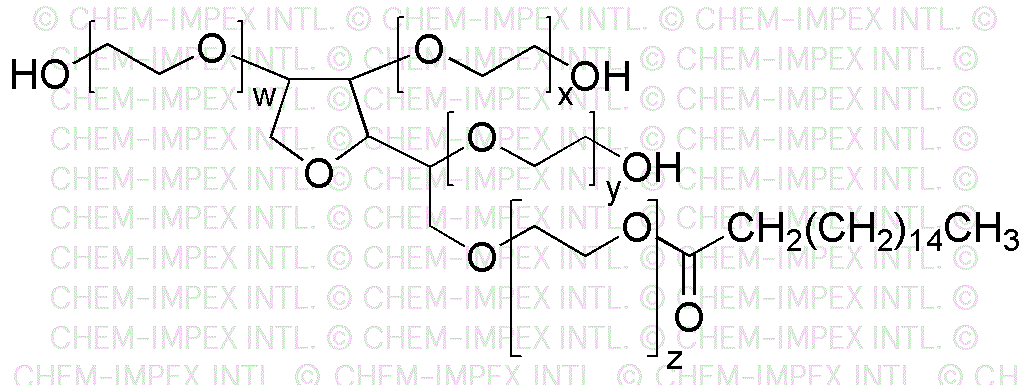Tween 40 is widely utilized in research focused on:
- Pharmaceutical Formulations: It acts as an emulsifier and stabilizer in drug formulations, enhancing the solubility and bioavailability of active ingredients, which is crucial for effective medication delivery.
- Cosmetic Products: Commonly found in lotions and creams, it helps to blend oil and water components, improving texture and application, making it a favorite in the beauty industry.
- Food Industry: Used as a food additive, it improves the consistency and shelf life of products like dressings and sauces, ensuring a better consumer experience.
- Biotechnology: In cell culture applications, it serves as a surfactant that aids in the growth of cells by providing a stable environment, which is essential for research and development in this field.
- Laboratory Reagents: Tween 40 is often used in various laboratory assays and experiments as a dispersing agent, facilitating the uniform distribution of substances in solutions.
General Information
Properties
Safety and Regulations
Applications
Tween 40 is widely utilized in research focused on:
- Pharmaceutical Formulations: It acts as an emulsifier and stabilizer in drug formulations, enhancing the solubility and bioavailability of active ingredients, which is crucial for effective medication delivery.
- Cosmetic Products: Commonly found in lotions and creams, it helps to blend oil and water components, improving texture and application, making it a favorite in the beauty industry.
- Food Industry: Used as a food additive, it improves the consistency and shelf life of products like dressings and sauces, ensuring a better consumer experience.
- Biotechnology: In cell culture applications, it serves as a surfactant that aids in the growth of cells by providing a stable environment, which is essential for research and development in this field.
- Laboratory Reagents: Tween 40 is often used in various laboratory assays and experiments as a dispersing agent, facilitating the uniform distribution of substances in solutions.
Documents
Safety Data Sheets (SDS)
The SDS provides comprehensive safety information on handling, storage, and disposal of the product.
Product Specification (PS)
The PS provides a comprehensive breakdown of the product’s properties, including chemical composition, physical state, purity, and storage requirements. It also details acceptable quality ranges and the product's intended applications.
Certificates of Analysis (COA)
Search for Certificates of Analysis (COA) by entering the products Lot Number. Lot and Batch Numbers can be found on a product’s label following the words ‘Lot’ or ‘Batch’.
*Catalog Number
*Lot Number
Certificates Of Origin (COO)
This COO confirms the country where the product was manufactured, and also details the materials and components used in it and whether it is derived from natural, synthetic, or other specific sources. This certificate may be required for customs, trade, and regulatory compliance.
*Catalog Number
*Lot Number
Safety Data Sheets (SDS)
The SDS provides comprehensive safety information on handling, storage, and disposal of the product.
DownloadProduct Specification (PS)
The PS provides a comprehensive breakdown of the product’s properties, including chemical composition, physical state, purity, and storage requirements. It also details acceptable quality ranges and the product's intended applications.
DownloadCertificates of Analysis (COA)
Search for Certificates of Analysis (COA) by entering the products Lot Number. Lot and Batch Numbers can be found on a product’s label following the words ‘Lot’ or ‘Batch’.
*Catalog Number
*Lot Number
Certificates Of Origin (COO)
This COO confirms the country where the product was manufactured, and also details the materials and components used in it and whether it is derived from natural, synthetic, or other specific sources. This certificate may be required for customs, trade, and regulatory compliance.

